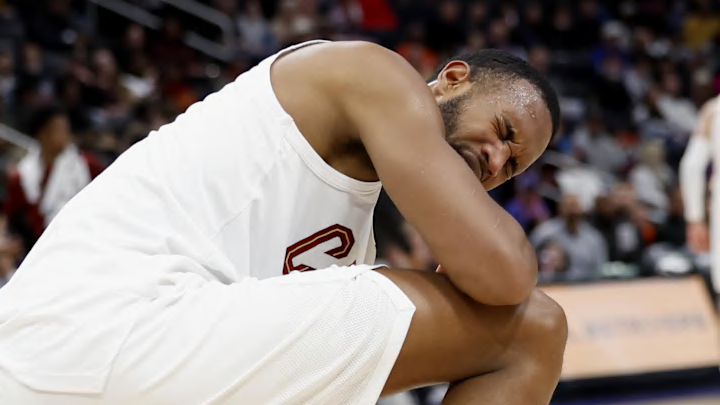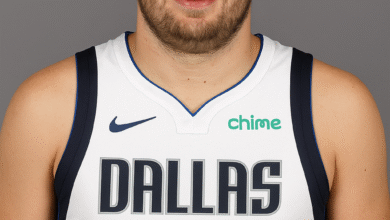Cavs Injury Report: Breaking Down What It Means for the Team

Introduction: Why the Cavs Injury Report Matters
cavs injury report In the NBA, staying healthy often matters just as much as having star power. For the Cleveland Cavaliers, a team that has been steadily building momentum over the past few seasons, injuries can easily make or break their playoff ambitions. That’s where the Cavs injury report comes in—it’s not just a list of names, it’s a blueprint that reveals how the team might have to adjust on the court.
Fans check the Cavs injury report like clockwork, because it can determine whether their favorite player will suit up or sit out. Coaches and analysts dissect the report to see what rotations may need tweaking. Even opponents look at it closely, because if a key Cavs star is sidelined, it completely changes the game plan for both sides.
The importance of this report isn’t limited to the short term. Injuries impact chemistry, rotations, and even trade or contract decisions. A detailed look at who’s hurt and for how long can tell us a lot about where the Cavs are headed this season.
Key Players Affected in the Latest Cavs Injury Report

Every time the Cavs Injury Report release their latest injury updates, fans immediately search for big names like Donovan Mitchell, Darius Garland, or Jarrett Allen. The presence or absence of these stars has a direct impact on how competitive the Cavs look in any given matchup.
Take Donovan Mitchell, for example. He’s the Cavs’ offensive engine, and when he’s sidelined, the team loses not just scoring but also leadership on the floor. Garland, on the other hand, controls tempo and creates opportunities for teammates. Without him, the offense can sometimes feel stagnant or predictable. And then there’s Jarrett Allen, whose rim protection and rebounding are vital. Losing him means the Cavs’ defense has to work twice as hard.
Beyond the stars, role players on the injury report also matter more than many realize. A forward like Isaac Okoro or Caris LeVert missing time can disrupt the team’s depth and versatility. Bench players may have to step into bigger roles, and while that can spark growth, it can also expose weaknesses against top-tier competition.
How Injuries Affect the Cavs’ On-Court Performance
The Cavs injury report doesn’t just affect who plays—it affects how they play. Missing key starters forces the team to rethink everything from offensive sets to defensive schemes. For instance, if Garland is out, the Cavs may lean more heavily on Mitchell to initiate plays, which can result in overuse and fatigue.
Defensively, the absence of someone like Jarrett Allen means the paint becomes more vulnerable. The Cavs pride themselves on their rim protection and ability to contest shots inside, but without Allen, opponents attack the basket with more confidence. That shifts extra pressure onto Evan Mobley, who has to carry a larger defensive load.
Rotations also look very different when injuries pile up. The bench gets stretched thinner, and younger players may be thrown into the fire earlier than expected. While that’s good for development, it can hurt consistency. The Cavs’ coaching staff has to balance immediate competitiveness with long-term player growth, which isn’t an easy task when the injury list keeps growing.
Short-Term vs. Long-Term Injury Concerns
Not all injuries are created equal, and the Cavs injury report often highlights this difference. A sprained ankle may only sideline a player for a few games, while a hamstring strain could linger for weeks and affect explosiveness even after the player returns.
Short-term injuries, while frustrating, are usually manageable. The Cavs can make minor rotation adjustments and rely on their depth to weather the storm. But long-term injuries create ripple effects. Losing a star for months changes the team’s identity and forces other players to adapt in ways they may not be ready for.
In addition, long-term concerns can influence front office decisions. If management fears a recurring injury for a key player, they may adjust their trade deadline strategy or offseason plans. What looks like a simple injury report to fans is often the start of deeper conversations about the franchise’s long-term direction.
How the Cavs Coaching Staff Adjusts to Injuries
The Cavs’ coaching staff doesn’t just read the injury report—they build entire game plans around it. When a star is out, the offense might become more motion-based, spreading touches across multiple players instead of relying heavily on one. That can sometimes make the team more unpredictable, though it often comes with growing pains.
Defensively, coaches may change matchups or shift to more zone coverage to protect weaker areas created by injuries. Without Allen, for example, the Cavs might double-team more aggressively in the post to compensate for missing shot-blocking presence.
Player development also plays a role here. Injuries provide opportunities for young players to gain valuable minutes. Coaches like to see who can step up under pressure, because that information is useful not only for this season but for future roster planning.
Fan Reactions and Media Buzz Around the Cavs Injury Report
One of the more underrated aspects of the Cavs injury report is the way it drives conversations among fans and media. Social media lights up with speculation every time a star is listed as questionable or out. Fans debate whether the team should push through or rest players to avoid long-term setbacks.
Local media outlets also dive into the report, offering medical insights, recovery timelines, and potential lineup predictions. This coverage helps fans understand the bigger picture, but it can also fuel panic if the injury news is worse than expected.
For Cavs supporters, the injury report is more than just an update—it’s a piece of news that directly affects their hopes for the season. If the injury list is short, optimism runs high. If it’s long, fans start worrying about whether the team can stay competitive in a tough Eastern Conference.
The Bigger Picture: Cavs’ Depth and Resilience
Injuries are inevitable in any NBA season, but the Cavs injury report also highlights something important: depth and resilience. No team can rely solely on its stars. Championships are often won by teams that can withstand injuries and still find ways to win.
The Cavs have built a roster that can handle adversity. Players like Caris LeVert, Max Strus, and others have shown the ability to step up when called upon. Young prospects getting extra minutes due to injuries also accelerate their growth, which strengthens the team in the long run.
This resilience is what keeps the Cavs competitive even when the injury report isn’t ideal. While losing stars hurts, the depth pieces and strong team culture give Cleveland a fighting chance in most matchups.
Conclusion: Why Keeping an Eye on the Cavs Injury Report Is Essential
At first glance, the Cavs injury report might look like a simple list of medical updates. But for fans, coaches, and even opposing teams, it’s much more than that. It shapes strategies, impacts morale, and tells the story of how the Cavs will navigate the highs and lows of an NBA season.
As the team continues its journey toward becoming a consistent Eastern Conference contender, staying healthy will remain the ultimate challenge. Injuries will happen—that’s unavoidable—but how the Cavs respond will define their success.
So the next time you see an update on the Cavs injury report, remember: it’s not just about who’s out tonight. It’s about what that absence means for the team’s chemistry, strategy, and long-term future. For Cleveland, every name on that list carries weight, and every recovery brings fresh hope.



